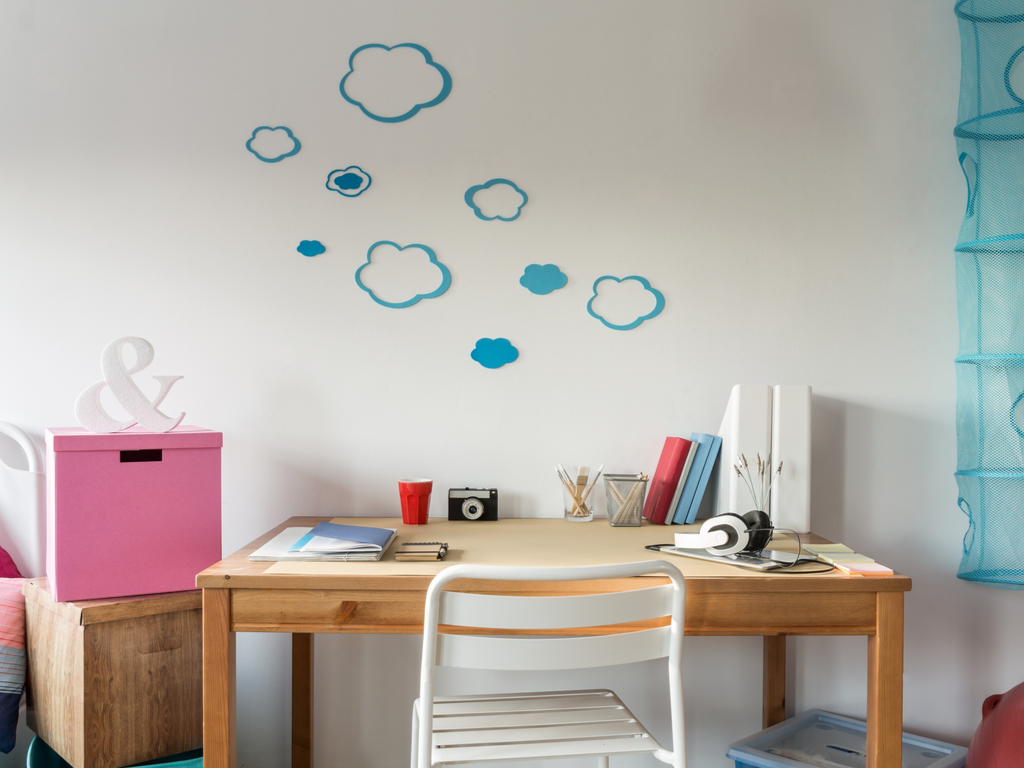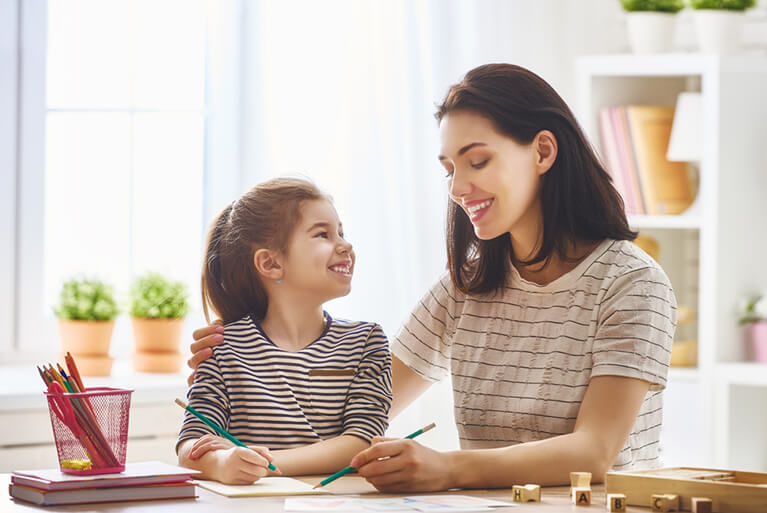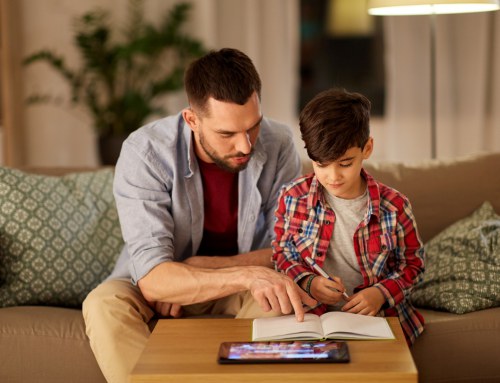Do you feel your most productive with your laptop out, in your PJs, still under the covers? We’d guess probably not. The same logic applies to your children.
Converting a space in your house to a designated learning area can do a lot to help your kids stay on task. You don’t have to get a home renovation squad in but you will reap the benefits. Here’s what you can do.
Declutter
First things first, it’s time to minimize the mess. Don’t worry, we’re not going to ask you to deep clean the entire house, just declutter the area you choose to be the working space.
Invest in some bins or stackable trays and do your best to organize your designated learning area. Get your children involved in the task so the space begins to feel like their own.
For younger children especially, ensure you’re using things like baskets and trays. Options like folders and lever-arches work but they put the work out of sight which can sometimes cause students to forget all about it!
Minimize distractions
Steer clear of the TV room, turn down that music and keep the phones tucked away. You want to create a space with minimal distractions. This will allow your children to get focused and stay that way for extended periods of time. It won’t always be perfect but it doesn’t hurt to avoid the obvious distractions.
Consider your kids’ preferences
Some people function best in an open-plan office. Others need to be tucked away with noise-canceling headphones. Everyone has their preferences for working environments, little humans are no different.
Consider where you see your children doing their best work. Does your eldest need some alone time to finish that essay? Does your youngest feel better when he can hear you chatting in the next room? It’ll take a bit of trial and error to figure out everyone’s preferences but it will definitely help with focus.
Provide different working spaces
Sometimes you just need a change of scenery. Making the leap from the desk to the kitchen table can be the shift you need to finally finish that report.
Incorporate some different working spaces in the house. It could be a bean bag in the corner or you could create a closed-off office space with a couple of sheets and some sturdy tape. Having options will make everyone feel a bit less cramped and a bit more ready to work. (Bonus point: you can use these spaces too!)
Create an independent learning area
Learning doesn’t have to be rigid. In fact, you want to encourage your kids to explore knowledge on their own. With that in mind, set up an area with independent learning options. From books to maps to charts, have a few items on hand that your child can freely access.
Let them decorate
You want the space to feel like their own. What better way to promote ownership than to allow your kids to decorate?
We’re not talking about drawings on your fresh coat of paint. Try asking your children what they’d ideally like to see in their area. Provide them with the resources and let them have some fun with it!
Spotlight achievements
There are few things that kids love more than an achievement board. Whether you want to create a gold star system or you’d like to encourage them to showcase their best work, dedicate an area to their accomplishments. This functions as a way to make the space more personal and can also be used to incentivize focus.
Clear and clean at the end of the day
Make clean up a daily part of your routine. Ensuring the space is tidy and ready for a new day will help create some sort of rhythm and can teach responsibility.
By making it clear that this space is a kid space, you can empower your children to take ownership of everything that goes on there – including the mess and the cleanup!
The key takeaway
It’s not about creating a dazzling, Pinterest ready space – but rather building an area that addresses your child’s learning needs. Set it up together and have some fun in the process!








